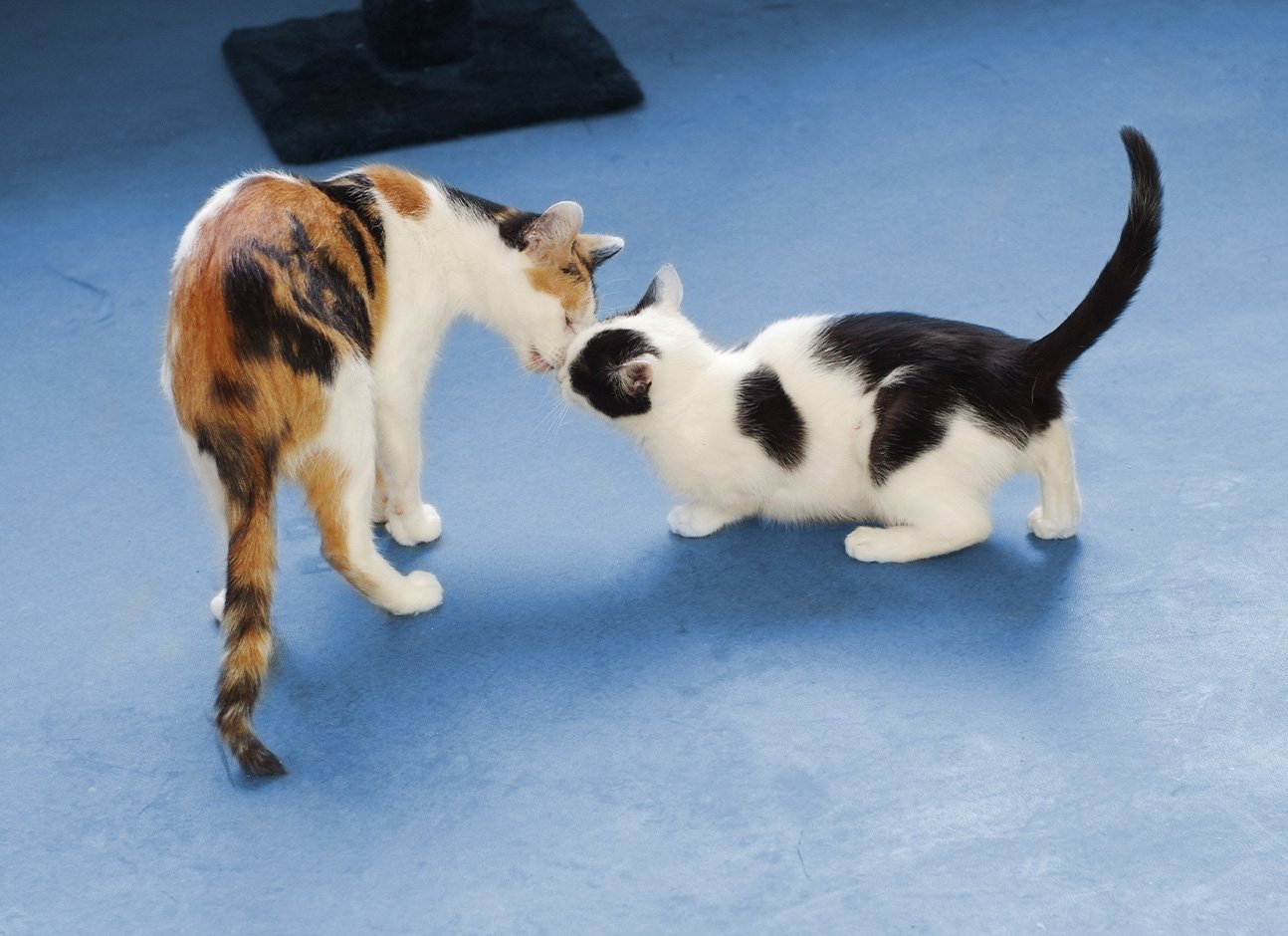Cats have their own unique way of communicating with the rest of the world. However, they have a notably distinct and complex way of communication. For example, when cats rub on people and furniture, they are essentially scent marking as a form of greeting, but mostly as a way of replacing the different scent on you in order to consign a sense of familiarity. Although cats may not be able to speak like us, their body language reveals quite a bit about them which necessitates the need to discuss it further.
The best way to understand your cat is by paying close attention to their tail behavior. When your cat approaches you with their tail straight up, they are essentially telling you that they are happy to see you. Cats usually do this as they greet you when you come home and / or when they want your attention. Normally, this is what your cat’s tail should look like.
A tail pushed straight out when your cat is hunkered down low, reveals that they are ready to attack. This usually happens when they intend to make a meal out of an unsuspecting prey, while pursuing another cat or even your slippers. A puffed up tail is your cat’s way of standing their ground when they encounter a scary dog or an unfamiliar person, as part of their “fight or flight” response. When your cat is flicking their tail, they are asking everyone to leave them alone or else risk facing the consequences. If your cat’s tail is not moving normally, it is a sign to take them to the veterinarian.
Much like humans, cats also experience stress. Flattened ears or body signals stress or fear in cats. Sometimes, purring and licking lips (which is normal after meals) can also mean that your cat is unwell or is under some kind of stress. When they demonstrate such behavior, it is important to ensure that your cat has a place to hide or climb up high.
Every purr, every whisker twitch matters. Get acquainted with our specialized ‘Vet for Cat‘ services.
